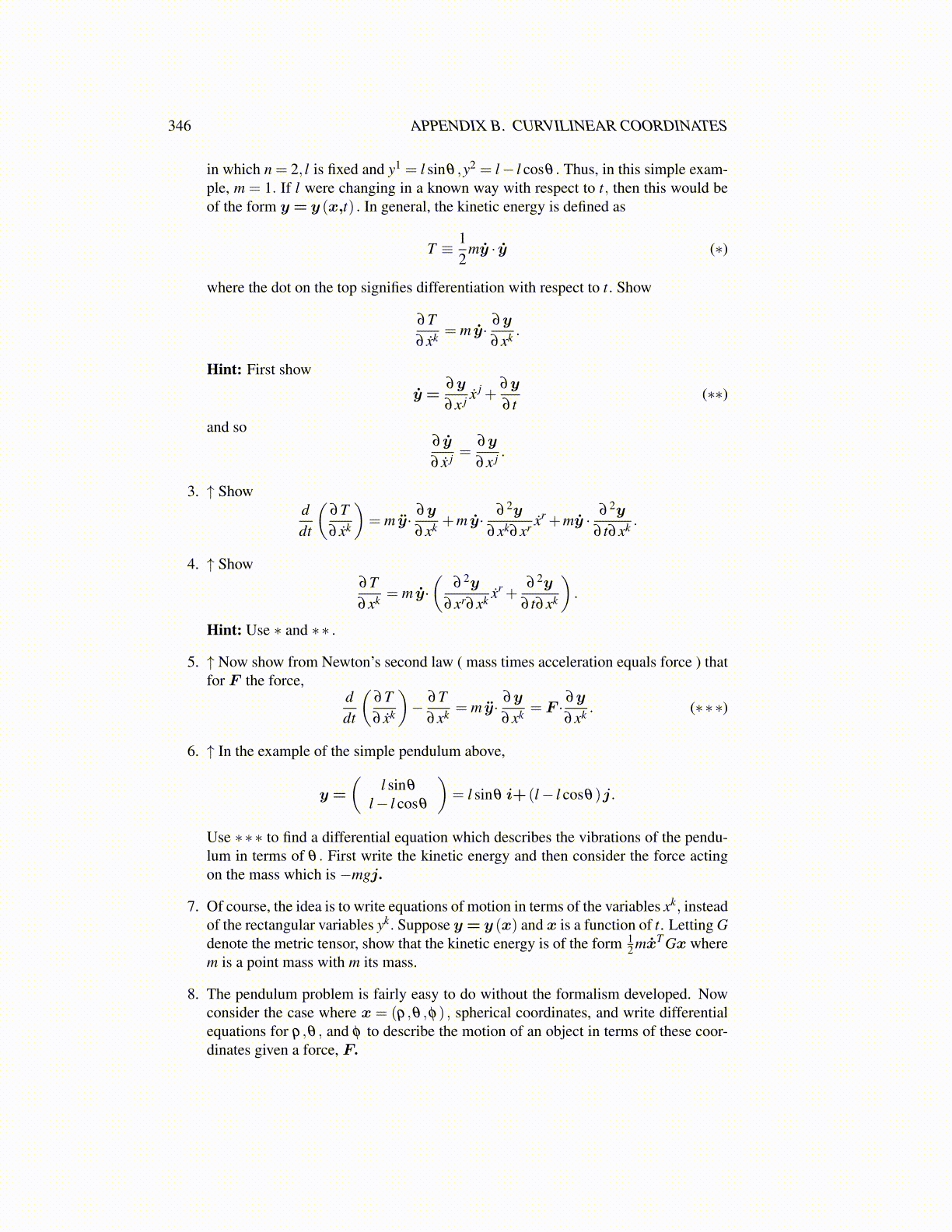
346 APPENDIX B. CURVILINEAR COORDINATES
in which n = 2, l is fixed and y1 = l sinθ ,y2 = l− l cosθ . Thus, in this simple exam-ple, m = 1. If l were changing in a known way with respect to t, then this would beof the form y = y (x,t) . In general, the kinetic energy is defined as
T ≡ 12
mẏ · ẏ (∗)
where the dot on the top signifies differentiation with respect to t. Show
∂T∂ ẋk = m ẏ· ∂y
∂xk .
Hint: First show
ẏ =∂y
∂x j ẋ j +∂y
∂ t(∗∗)
and so∂ ẏ
∂ ẋ j =∂y
∂x j .
3. ↑ Showddt
(∂T∂ ẋk
)= m ÿ· ∂y
∂xk +m ẏ· ∂ 2y
∂xk∂xr ẋr +mẏ · ∂ 2y
∂ t∂xk .
4. ↑ Show∂T∂xk = m ẏ·
(∂ 2y
∂xr∂xk ẋr +∂ 2y
∂ t∂xk
).
Hint: Use ∗ and ∗∗ .
5. ↑ Now show from Newton’s second law ( mass times acceleration equals force ) thatfor F the force,
ddt
(∂T∂ ẋk
)− ∂T
∂xk = m ÿ· ∂y
∂xk = F · ∂y∂xk . (∗∗∗)
6. ↑ In the example of the simple pendulum above,
y =
(l sinθ
l− l cosθ
)= l sinθ i+ (l− l cosθ)j.
Use ∗∗∗ to find a differential equation which describes the vibrations of the pendu-lum in terms of θ . First write the kinetic energy and then consider the force actingon the mass which is −mgj.
7. Of course, the idea is to write equations of motion in terms of the variables xk, insteadof the rectangular variables yk. Suppose y = y (x) and x is a function of t. Letting Gdenote the metric tensor, show that the kinetic energy is of the form 1
2 mẋT Gx wherem is a point mass with m its mass.
8. The pendulum problem is fairly easy to do without the formalism developed. Nowconsider the case where x = (ρ,θ ,φ) , spherical coordinates, and write differentialequations for ρ,θ , and φ to describe the motion of an object in terms of these coor-dinates given a force, F.